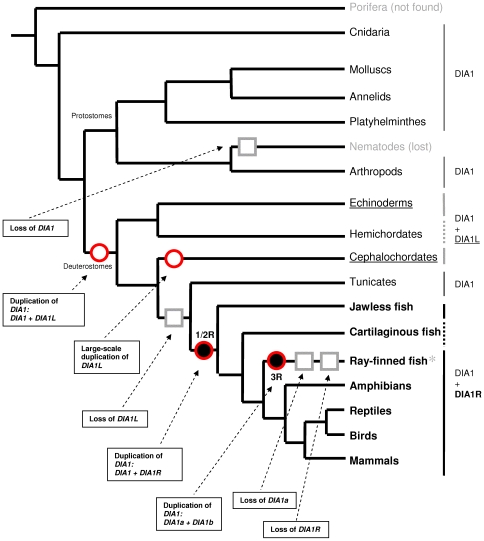Figure 1. DIA1-family superimposed on a simplified metazoan phylogeny.
DIA1 is absent from the genome sequences of nematodes (grey font) as well as fungi, plants, amoebozoa and chromalveolates (not shown). Due to a paucity of sequence data, it is unclear whether a DIA1 homologue is absent from the Porifera (grey font). DIA1L was exclusively found in echinoderm and cephalochordate genomes (underlined), which also encode DIA1. DIA1L is absent from tunicates, but a current dearth of sequence data precludes evaluation of hemichordate genomes for DIA1L homologues (indicated by a dotted bold grey line on right hand side, and a lack of underline). A bold dotted black line (right-hand side) indicates that the presence of DIA1R has been confirmed in cartilaginous fish but, probably due to a lack of sequence data, DIA1 has yet to be identified in this class of chordates. Both a DIA1 and DIA1R gene are present in vertebrate genomes (bold font), with a notable absence of DIA1R in acanthopterygian fish (asterisk). Furthermore, two DIA1 paralogues were identified in the genomes of fish from the superorder Ostariophysi, but not in fish from other superorders (see Figure 3). Data for the schematic metazoan phylogeny were from numerous sources [157]–[163]. Proposed rounds of whole-genome duplication (WGD) are indicated by filled black spheres, where two WGDs occurred early in the vertebrate lineage (1R/2R) and a third WGD (3R) in the ray-finned fish lineage before the diversification of teleosts [43], [164], [165]. Proposed duplications of DIA1-family genes are indicated by red circles, and ‘loss’ of DIA1-family genes by grey squares. Dashed arrows are used to annotate events occurring in our current model of DIA1-family evolution. Further details of two different models of DIA1-family duplication and ‘loss’ events in the fish lineage (*) can be found in Figure 3, where some fish species encode DIA1 paralogues, while others lack DIA1R. Accession numbers of DIA1, DIA1R, and DIA1L sequences can be found in Tables S1-S5, Table S7 and Table S9.

